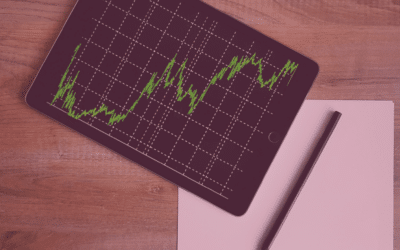Introduction to Calls to Action (CTAs) in Marketing
In marketing, a CTA is an invitation for your audience to take a specific action—like signing up for a newsletter, downloading a resource, or making a purchase. It’s one of the most important elements in any marketing campaign—it drives your audience to do something, turning passive visitors into active participants. Without CTAs, brands would be hard-driven to make a profit.
Strategies for Effective Call to Action Marketing
Not all CTAs are equally effective. Some are highly effective, while others fall flat. What makes a CTA work? Let’s explore a few strategies for getting your audience to take action.
Clear and Compelling Messaging
The first rule of a good CTA is clarity. You want your audience to know exactly what will happen when they click that button. Avoid vague language—be direct about what you’re offering. For example, instead of a button that says “Learn More,” try “Get Your Free Ebook.” See the difference? The second option is clearer and more enticing because it directly tells the user what they’re getting.
Clarity also extends to the tone of your CTA. It needs to be compelling and speak directly to your audience’s needs or desires. For instance, if you’re selling a fitness product, a CTA like “Start Your Fitness Journey Today” will likely resonate better than something generic like “Click Here.”
Strategic Placement of Call to Action Buttons
Where you place your CTA can be just as important as what it says. There’s a lot of debate over whether CTAs should be placed “above the fold” (near the top of the page) or “below the fold” (after the user scrolls). The answer? It depends on the context.
For when you want users to make quick decisions, like a newsletter sign-up on a landing page, an above-the-fold CTA is often best. This way, visitors don’t have to scroll—they see the CTA button right away. But for more complex offers, like a product demo or detailed service, placing the CTA below the fold (after you’ve explained the benefits) can actually lead to better conversion rates.
For example, after walking the user through a product’s key features, a CTA like “Get Started with a Free Trial” below the fold might perform better because the user has all the info they need to make a decision.
In email marketing, CTAs are typically placed both near the top and at the end of the email. If you’re sending a promotional email, you might have a CTA like “Shop Now” within the first few lines and then repeat it at the end after explaining the offer in more detail.
Using Urgency and Scarcity in Calls for Action
Urgency and scarcity are powerful psychological triggers that can push people to take action. When your CTA conveys a sense of urgency, like “Limited Time Offer—Act Now” or “Only 3 Spots Left—Sign Up Today,” it taps into your audience’s sense of FOMO. This makes users more likely to click because they feel like they need to act quickly, or the opportunity will pass them by.
For example, e-commerce sites often use CTAs like “Buy Before Midnight for Free Shipping” to create urgency. Scarcity can be used similarly. Think of phrases like “Only 5 Left in Stock” or “Exclusive Offer for Subscribers Only.” These CTAs push the user toward action by creating a sense that the opportunity might disappear if they don’t act fast.
A/B Testing and Optimization Techniques
One of the best ways to make your CTAs are performing well is to test different versions through A/B testing. This involves creating two (or more) variations of your CTA and seeing which one performs better. You can experiment with different wording, button colors, placements, or even the size of the button.
For example, you could test a simple “Download Now” against a more specific “Get Your Free Guide Today” and see which version gets more clicks. Similarly, you might find that a bright red button catches more attention than a blue one, or that placing the CTA higher on the page leads to more conversions.
The key is to consistently test and tweak your CTAs to improve their efficiency. Over time, you’ll learn what works best for your audience, making your marketing efforts even more powerful.
Tools and Resources for Implementing Call-to-Action Marketing
You don’t have to create or manage CTAs from scratch. There are several tools available that can help you design, track, and optimize your calls to action.
Call to Action Button Generators
Designing the perfect CTA button doesn’t have to be a hassle. Tools like Canva and Button Optimizer allow you to create custom buttons with different colors, shapes, and text styles that fit your brand. You can easily generate and embed these buttons into your website or email campaigns without needing a professional designer.
For example, Button Optimizer lets you experiment with button designs while previewing how they’ll look on different devices. This ensures that your CTAs are visually appealing across both desktop and mobile platforms.
Analytics and Tracking Tools for Monitoring Campaign Performance
Once your CTA is live, you’ll want to track how it’s performing. Tools like Google Analytics and Hotjar allow you to monitor key metrics, like click-through rates, conversions, and even user behavior on your site. Google Analytics can track where users clicked and whether they followed through with the intended action, like completing a purchase or filling out a form.
Hotjar, on the other hand, offers heatmaps that show where users are clicking on your website. If you notice that users aren’t engaging with your CTA, you can adjust the placement or design to improve performance. These insights are invaluable for tweaking your CTAs to maximize effectiveness.
Conclusion
Calls to Action (CTAs) are one of the most important elements in any marketing strategy. From crafting clear and compelling messaging to strategically placing CTAs and creating urgency, these small but powerful tools can have a big impact on conversions. By regularly testing and optimizing your CTAs, and using the right tools to monitor performance, you can make sure your marketing campaigns are always driving the results you’re looking for. Good luck with your next CTA strategy.



